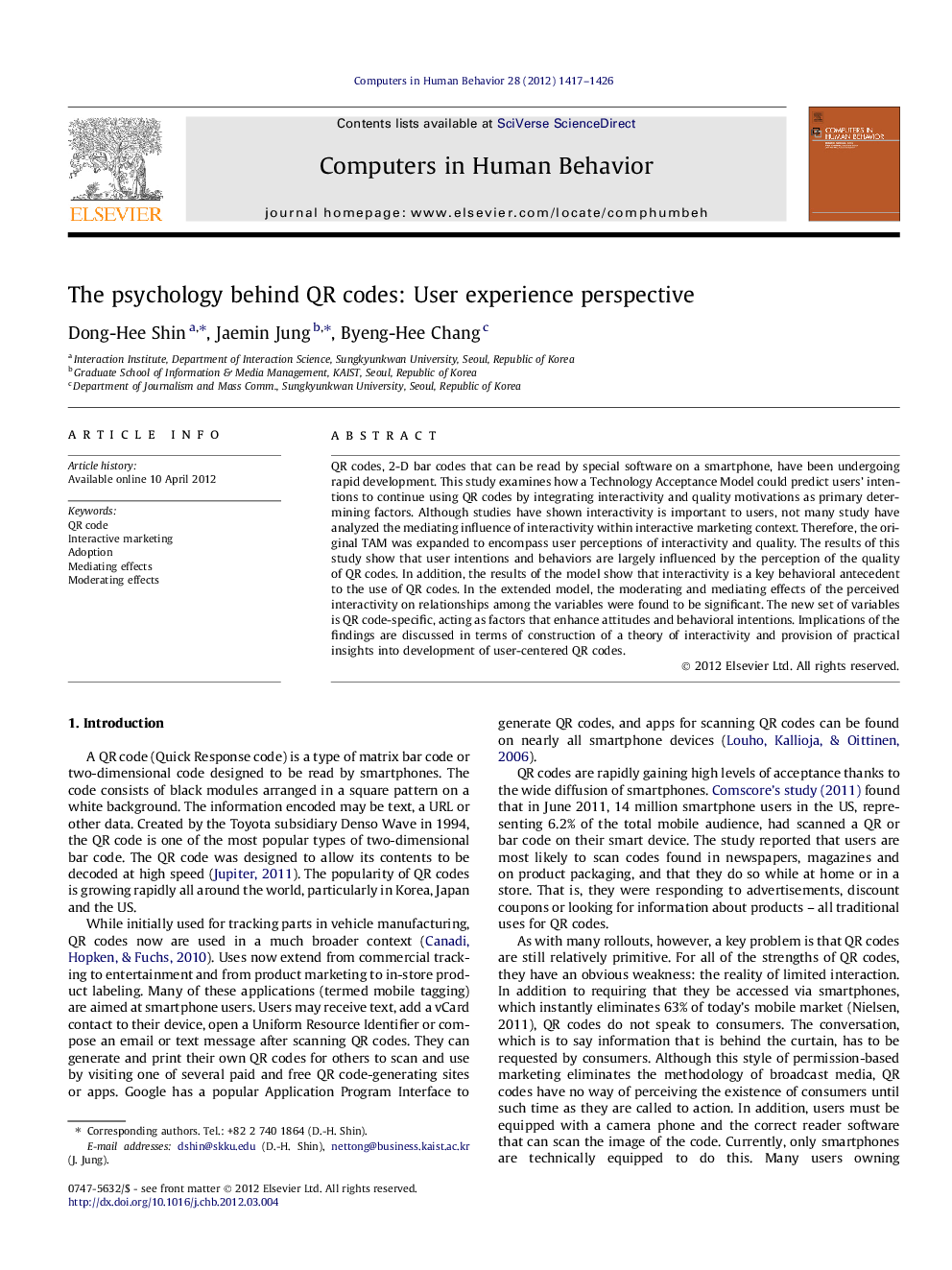| Article ID | Journal | Published Year | Pages | File Type |
|---|---|---|---|---|
| 351403 | Computers in Human Behavior | 2012 | 10 Pages |
QR codes, 2-D bar codes that can be read by special software on a smartphone, have been undergoing rapid development. This study examines how a Technology Acceptance Model could predict users’ intentions to continue using QR codes by integrating interactivity and quality motivations as primary determining factors. Although studies have shown interactivity is important to users, not many study have analyzed the mediating influence of interactivity within interactive marketing context. Therefore, the original TAM was expanded to encompass user perceptions of interactivity and quality. The results of this study show that user intentions and behaviors are largely influenced by the perception of the quality of QR codes. In addition, the results of the model show that interactivity is a key behavioral antecedent to the use of QR codes. In the extended model, the moderating and mediating effects of the perceived interactivity on relationships among the variables were found to be significant. The new set of variables is QR code-specific, acting as factors that enhance attitudes and behavioral intentions. Implications of the findings are discussed in terms of construction of a theory of interactivity and provision of practical insights into development of user-centered QR codes.
► An acceptance model of QR codes. ► The role of interactivity in QR codes. ► User experience are influenced by the perception of the quality of QR codes.
